9th – 12th Grade
Italian Heritage Curriculum
View Lesson Plans:
– Elementary School
– Middle School
– High School
– All Lessons
Unit Seven: Italians and the Holocaust
View Lesson Plans
Lesson One: Guilty of Righteousness
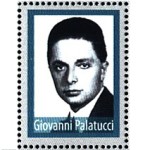
Subjects: World History, Character Education
Description:
In this lesson students will learn about Italian citizens and public officials who ignored certain laws during the 1930’s and 1940’s to follow what they felt was a higher law. They took action to protect Jewish people from persecution under Nazi policies enacted in Italy as a result of Italy’s alliance with Germany. Students will learn how Italians tended to be less supportive of the extreme measures taken against the Jews by the Nazis.
Lesson Two: Righteous Italian Heroes
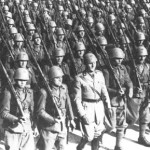
Subjects: Civics, World History, Character Education
Description:
Legislation was passed in Italy via the Falco Laws, reversing freedom of religion. Benito Mussolini’s 1938 Manifesto of Italian Racism expelled Jews from all public services, the army and public schools. The lesson explores how courageous Italians defied the Fascist mandates at certain risk to their own lives and those of their loved ones, thus saving 40,000 Italian Jews.
Lesson Three: Primo Levy
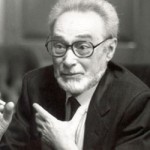
Subjects: Civics, Language Arts, World History, Character Education
Description:
The unspeakable horror of the Nazi death camp at Auschwitz is given a voice in the poem SCHEMA, by this Italina Jewish concentration camp survivor. Students will explore the dehumanization of the individual and Primo Levi’s admonition of abuse and warning for the future.
Lesson Four: Italy and the Holocaust Overview
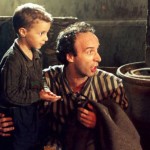
Subjects: World History, Sociology
Description:
The Final Solution is one of the grimmest periods in human history. Racism leads to untold suffering and injustice. However, an example for optimism to rebel against such injustice can be found in the Italian national character’s value for humanism. Although an ally of Nazi Germany, Italians from all social strata resisted the capture and deportation of their countrymen, resulting in the survival of 80-85%, or 40,000 of the Jewish population of Italy.
Lesson Five: The Foibe Massacres
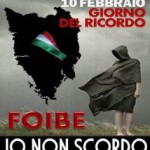
Subjects: World History/ U.S. History, Genocide/Holocaust Studies, World Languages
Description:
In this lesson, students will learn that during and after World War II nearly 15,000 Italian citizens were imprisoned, tortured, and thrown alive into deep, narrow ravines called Foibe by Yugoslav Communists. Many have called this an act of ethnic cleansing of the regions known as Istria and Dalmatia. Thousands of Italian men and women were also sent to gulags while hundreds of thousands more were forcibly expelled from Istria and Dalmatia. The Communists also confiscated their properties. Students will learn why Yugoslav Communist partisans worked to eliminate all Italians from Istria and Dalmatia, considering historical perspective of the regions. They will determine why the Italian government (both left and right) wanted to cover-up the Foibe massacres until 2005, and why they eventually changed their approach to the atrocities. Following this lesson plan, students will be able to extrapolate from their research and deduce why some historical narratives might look to hide various acts of brutality, ethnic cleansing, and genocide, while giving copious attention to other acts of brutality and attempts at ethnic cleansing and even genocide.
Unit Eight: Distinguished Women
View Lesson Plans
Lesson One: Maria Gaetana Agnesi
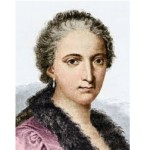
Subjects: Mathematics
Description:
Maria Gaetana Agnesi was truly a great influence for future Italian and Italian American women for her inner strength and perseverance to achieve her goal. She was groomed by her father from the time she was a young girl to be a scholar. This was an unusual practice during the 1700s as most females were educated only through nunneries or monasteries. Her father requested her presence during many gatherings at his house where many intellectual men tended to gather to discuss subjects such as philosophy, mathematics, and the world around them. Maria became a scholar of 3 ancient languages and mathematics, specifically in Calculus. She developed one of the earliest textbooks with the help of Ramiro Rampinelli, her mentor. She was given international recognition for her work and was offered the status of professor at the University of Bologna. So why did she give up all her hard work and take a completely different path in life?
Lesson Two: Rita Levi-Montalcini

Subjects: Science
Description:
During a time of unrest throughout the world, Rita Levi-Montalcini challenged the face of adversity and achieved great status as a world-renown scientist. Rita, a half-Italian and half-Jewish woman, defied her father’s wishes to become a typical wife and mother. She graduated medical school and began her research and experimentation with the Brussels Neurological Institute during the time of World War II. Rita’s perseverance would eventually lead her to her discovery with colleague Stanley Cohen of the Nerve Growth Factor for which she was awarded several remarkable awards including the Nobel Prize. Rita has been honored many times as a famous Italian woman who has influenced many women in the area of science. In this lesson, students will have an opportunity to experiment in simulated nerve growth activities.
Lesson Three: Sofonisba Anguissola
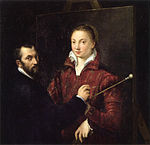
Subjects: Art, Performing Arts
Description:
We have all heard of the famous Italian Renaissance artists such as Michelangelo and Campi. What most people do not know is that somewhere in the male-dominated world of artists was Sofonisba Anguissola. She was an Italian woman who showed a natural talent in painting and was encouraged to achieve greatness by her father. Though living during a time when women were very limited in what they were allowed to do, Anguissola defied this mindset and studied under Bernardo Campi. She pursued her love of art and further developed her talent as she traveled to Spain and held the position of court painter for King Phillip II. Her work was sent to Michelangelo for review, who remarked on her incredible talent. In this lesson, students will have an opportunity to experiment with different mediums to make a creative masterpiece of their own.
Unit Nine: Italy in the 20th and 21st Centuries
View Lesson Plans
Lesson One: Monongah Mining Disaster
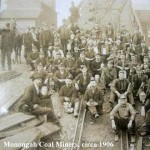
Subjects: U.S. History
Description:
In this lesson, students will learn of a terrible accident in the coal fields of West Virginia in 1907 that involved hundreds of unfortunate Italian immigrants. At around 10:30 AM on December 6th, 1907, the peace of the small coal-mining town of Monongah, West Virginia was shattered by a double blast that shook buildings, knocked down horses and pedestrians, and left a layer of thick coal dust everywhere. The underground blast was heard as far as eight miles away. Two connected coal mines belonging to the Fairmount Coal companies had suffered two nearly simultaneous and catastrophic blasts deep underground. Within moments of the explosions, nearly all of the miners at work that day, at least 358 men and possibly hundreds more, were dead. It would be the worst mining accident in American history. In the lesson, students will have the opportunity to learn what happened in that terrible accident through readings and primary source photographs and draw conclusions about what happened and why. They will analyze the demographics of the miners involved, including the Italians, and make reasoned conclusions about why these particular people found themselves in this particular situation that day. The lesson will conclude with them demonstrating their understanding of the event and the significance of the role of the Italian immigrants and others who were involved. They will also have the chance to evaluate the contribution of those who gave their lives in this disaster in terms of any progress that may have come from it.
Lesson Two: Choosing Between the Past and the Present
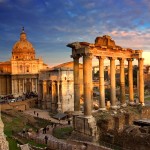
Subjects: World History
Description:
This lesson addresses the balances and compromises that must be struck between the need to excavate and study archaeological sites discovered in Italy and the need to minimize the disruption and expense that such investigations cause to the modern communities. Often current populations and businesses are active at the same locations as the archaeological sites in this increasingly urban environment. In this lesson, students will learn of one of these major archaeological sites located under a modern railroad station in modern Pisa. They will study the information and value of this site to history and how it had been excavated. They will also read about the disruption it has caused to the construction of the new railroad terminal. Next they will learn about new technologies that can be used to study the archaeological site while causing minimal disruption to modern-day activities at the site. As a culminating activity, students will role-play a situation in which a historical site has been discovered and the people involved in the site, both the archaeologists and the other people living and working at the site, have to work out how they can co-exist and all meet their own needs.
Lesson Three: Italian Space Agency

Subjects: Science, Language Arts
Description:
In this lesson, students will learn about the history of Italy’s space program called Agenzie Spaziale Italiana. The students will also explore the important role that Italy has in developing new components that would improve and expand current living and laboratory areas for the International Space Station. The lesson requires students to research and create a timeline that outlines the evolution of Italy’s space programs and contributions. In groups, the students will be given a role to play in order to create a newscast that announces the breakthrough developments of Italy’s space projects. The students are encouraged to be as creative as possible and may even want to dress up or use props when they deliver their newscast to the class.
Lesson Four: Italian Nobel Prize Recipients in Literature
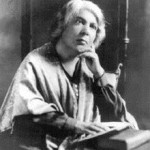
Subjects: Literature, World History
Description:
For centuries Italian writers have excelled in all areas of literature. Over the last one hundred years, four Italians have received the Nobel Prize for Literature. Outside of their native Italy, however, they are relatively unknown. This lesson’s goal is to familiarize students with these Nobel Prize recipients. One result of this lesson will be that the students will be able to identify Giosue’ Carducci, Grazia Deledda, Luigi Pirandello, and Dario Fo as Italians who have been awarded the Noble Prize in Literature. The students will also be able to identify the significance of the Nobel Prize. They also will be introduced to and learn to identify the writing styles, or genres, of these Italian writers. The focus activity of the lesson will involve the students using the jigsaw approach to explore the objective. The lesson’s assessment will ask the students to use higher-level thinking skills to demonstrate what they have learned about these Italians.


